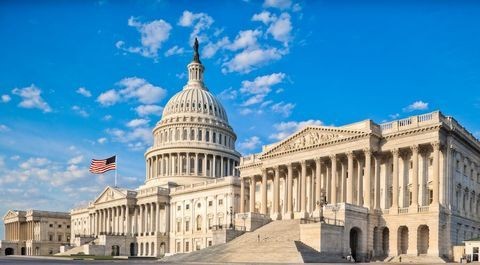President Biden Issues Executive Order Directing “Whole of Government” Assessment of Digital Assets
Client Alert | 5 min read | 04.05.22
On March 9, 2022, President Biden issued the long-awaited Executive Order on Ensuring Responsible Development of Digital Assets (the “EO”) expressing a U.S. strategy for the development and regulation of digital assets[1] and a potential U.S. Central Bank Digital Currency[2] (“CBDC”). Possibly accelerated in part by the desire to address potential Russian sanctions evasion,[3] the EO mandates numerous reports by several federal agencies to facilitate policy and legislative development in this area.
The EO directs a “whole-of-government” approach to digital asset innovation, and directs federal agencies to address the risks and benefits of digital assets, with a focus on the following six thematic priorities: (1) consumer and investor protection; (2) financial stability; (3) illicit finance; (4) U.S. leadership in the global financial system and economic competitiveness; (5) financial inclusion; and (6) responsible innovation. The EO focuses on balancing national security and public policy interests with a commitment to U.S. digital asset and payment system innovation.
While the EO does not create any new rules, it is a welcome development for the digital assets space, as it signals a desire for national coordination and clearer guidance regarding the regulation of digital assets. We summarize the EO below and provide a few key takeaways.
Interagency Coordination
The EO establishes an interagency coordination process[4] to facilitate executive agency contributions to various reports and frameworks required under the EO. This interagency coordination process will be managed by the Assistant to the President for National Security Affairs and Assistant to the President for Economic Policy.[5]
The EO’s Six Policy Priorities
The EO identified six priority areas and tasked various agencies with preparing reports to support policy, legislation, and rule-making related to digital assets in accordance with these priorities.
- Consumer and investor protection: The EO expresses concern regarding the risks created by digital assets for consumers, investors, or businesses, and supports protections, including maintaining privacy and avoiding unlawful surveillance, to expand access to safe and affordable financial services through digital assets.[6] The EO directs the Treasury to submit a report within six months outlining the implications for consumers, investors, and businesses, and equitable growth in the adoption of digital assets. While the SEC is required to provide input, the EO does not squarely address the issue of whether digital assets, such as cryptocurrencies, are securities under federal law.
- Financial stability: The EO considers financial stability and market integrity risks and requests a report identifying specific financial stability risks and related regulatory gaps arising from the adoption of digital assets. Within 210 days, the Financial Stability Oversight Council is to outline these specific risks and gaps, incorporating previous analysis and assessments from reports from the President’s Working Group on Financial Markets (such as the November 2021 Stablecoin Report) and other agencies.[7]
- Illicit finance and national security: The EO identifies digital assets as a medium for cybercrime‑related activity, including ransomware incidents, money laundering, terrorism and proliferation financing, fraud and theft schemes, and corruption. The EO requires agencies, including the Department of State, Treasury, DOJ, Commerce, DHS, OMB, and DNI, and others, to prepare reports addressing illicit finance risks presented by each of the types of digital assets and a plan for mitigating illicit finance risks (including through regulation, supervision, and law enforcement, among other methods).[8]
- U.S. leadership in the global financial system and economic competitiveness: The EO expresses a desire to foster international cooperation and U.S. competitiveness in digital assets and financial innovation. To support this, the EO orders the development of a framework for interagency international engagements with foreign counterparts and international for a to address adoption of global principles and standards for digital assets transactions and use, and to promote development of digital asset technologies consistent with U.S. values and legal requirements; a report on the priority actions under this international engagement framework and the effectiveness of those action; and a framework for enhancing U.S. economic competitiveness in and by leveraging digital asset technologies.[9]
- Financial inclusion: While not requiring explicit analysis of financial inclusion concerns or opportunities, the EO does express the desire to expand access to safe and affordable financial services and reduce the cost of domestic and cross-border funds transfers and payments. The EO also establishes that it is U.S. policy to expand access to financial services to those underserved by the traditional banking system and ensure that the benefits of financial innovation, including digital assets, are enjoyed equitably by all Americans.[10]
- Responsible innovation: The EO establishes that it is U.S. policy to ensure that digital asset technologies and digital payments systems are created and implemented in a responsible manner that includes appropriate privacy, security, and consideration of environmental impacts. The EO requires a report addressing the environmental impacts of and opportunities presented by cryptocurrencies and distributed ledger technology.[11]
CBDCs
The EO expresses a view that if a U.S. CBDC is established, any future CBDC dollar payment systems should consider privacy protections and ensure transparency, connectivity, and platform and architecture interoperability or transferability.[12] The EO directs specific agencies to prepare a coordinated comprehensive report within six months on the future of money and payment systems, including potential implications of U.S. CBDC. DOJ is directed to prepare an assessment of whether legislative changes are required for the government to issue a U.S. CBDC and to provide appropriate legislative proposals. The EO also encourages the Federal Reserve to report on the value and implementation options for a U.S. CBDC.
The Office of Science and Technology Policy is required to provide a report within 180 days addressing the technological infrastructure, capacity, and expertise necessary to facilitate the introduction of a CBDC system, including emerging technology impacts and potential effects on government services.
Key Takeaways
The EO reflects considerable thought about digital assets at the highest levels of government, including a belief that digital assets and the associated blockchain technology may have promising use cases in the U.S. and globally, consistent with U.S. government interests. While the outcome of the various reports and studies – and the White House’s reaction to those findings – remains to be seen, the EO seems intended to temper concerns that the Biden Administration is averse to digital assets or technological innovation in the financial markets.
The EO also places a high emphasis on interagency coordination on the analysis, risks, and benefits of digital assets. Over the past few years, Treasury’s Financial Crimes Enforcement Network and Office of Foreign Assets Control, the Office of the Comptroller of the Currency, the SEC, CFTC, DOJ, and the Federal Reserve have discussed policy and regulatory considerations associated with digital assets, and for some agencies, issued regulatory guidance or pursued enforcement. While the EO does not indicate a preference to create a new government agency to supervise digital asset regulation, the mandates for coordination signal greater White House involvement in the U.S. government’s approach to digital assets and a desire to work toward a more coordinated plan.
[1] The EO defines digital assets broadly, and notes that “all CBDCs, regardless of the technology used, and to other representations of value, financial assets and instruments, or claims that are used to make payments or investments, or to transmit or exchange funds or the equivalent thereof, that are issued or represented in digital form through the use of distributed ledger technology. For example, digital assets include cryptocurrencies, stablecoins, and CBDCs. Regardless of the label used, a digital asset may be, among other things, a security, a commodity, a derivative, or other financial product. Digital assets may be exchanged across digital asset trading platforms, including centralized and decentralized finance platforms, or through peer-to-peer technologies.” EO § 9(d).
[2] A CBDC is “a form of digital money or monetary value, denominated in the national unit of account, that is a direct liability of the central bank.” EO § 9(b).
[3] The Russia-Ukraine conflict, while generating questions and concerns from government entities about sanctions avoidance, highlighted the value of the speed and transparency provided through cryptocurrencies as Ukraine was reportedly able to raise more than $50 million in cryptocurrency donations in less than a week, which the Ukrainian government claimed to have immediately spent on military supplies. See Olga Kharif, Ukraine Buys Military Gear With Donated Cryptocurrencies, Bloomberg (Mar. 4, 2022), https://www.bloomberg.com/news/articles/2022-03-04/ukraine-spends-15-million-of-crypto-donations-on-military-gear#:~:text=Ukraine%20has%20already%20spent%20%2415,of%20Digital%20Transformation%20of%20Ukraine.
[4] Id. at § 2.
[5] Members of the Executive Branches that are required to provide input into reports include the Treasury Department (“Treasury”), the Department of Defense, the Department of Justice (“DOJ”), the Department of Commerce (“Commerce”), the Department of Labor, the Department of Energy, the Department of Homeland Security (“DHS”), the Environmental Protection Agency, the Office of Management and Budget (“OMB”), the Office of the Director of National Intelligence (“DNI”), the Domestic Policy Council, the Council of Economic Advisers, the Office of Science and Technology Policy, the Office of Information and Regulatory Affairs, the National Science Foundation, and the United States Agency for International Development. The coordination process may also include certain independent regulatory entities as needed, such as the Federal Reserve, Consumer Financial Protection Bureau, Federal Trade Commission, Securities and Exchange Commission (“SEC”), Commodity Futures Trading Commission (“CFTC”), and Federal Deposit Insurance Corporation.
[6] Id. at § 5.
[7] Id. at § 6.
[8] Id. at § 7.
[9] Id. at § 8.
[10] Id. at § 2.
[11] Id. at §§ 2, 5(b)(vii).
[12] Id. at § 2.
Contacts
Insights
Client Alert | 2 min read | 12.29.25
FYI – GAO Finds Key Person “Available” Despite Accepting Employment with a Different Company
GAO’s key personnel rule is well-known—and often a source of frustration— amongst government contractors. Proposed key personnel who become “unavailable” prior to contract award—especially where they have accepted employment with a different company—may doom an offeror’s proposal by rendering it noncompliant with solicitation requirements. But GAO’s recent decision in FYI – For Your Information, Inc., B-423774, B-423774.2 (Dec. 19, 2025) provides some potential relief from that rule.
Client Alert | 4 min read | 12.29.25
More Than Math: How Desjardins Recognizes AI Innovations as Patent-Eligible Technology
Client Alert | 10 min read | 12.24.25
Client Alert | 3 min read | 12.24.25
Keeping it Real: FTC Targets Fake Reviews in First Consumer Review Rule






